Montessori bedroom
A child’s bedroom is their place to sleep, play, relax, and grow. At the heart of Dr. Maria Montessori’s educational philosophy is child-centered design and instruction – So what better place to implement Montessori than in your child’s own room?
We’ve already looked at what Montessori education is all about and the benefits of having Montessori furniture in your home… So today let’s talk Montessori bedrooms, specifically!
And, if you’re looking for an article about how to implement Montessori philosophies at home, check this out!
Your child’s own room should be more than just a comfy place to rest at the end of the day. In general, it should be a comforting and calming space and a place of personal growth… Just like we design our rooms as adults. Here we’re going to look at how you can create that environment in your child’s bedroom, the Montessori way.
The child’s room
The key here is to remember this: Montessori bedrooms are designed to reinforce independence and empower your child. This means everything is within reach or at their level. Keep this in mind with every item you put in their room, from their bed to the art on the walls!
Now, let’s focus on some elements you may want to include in your little one’s room…
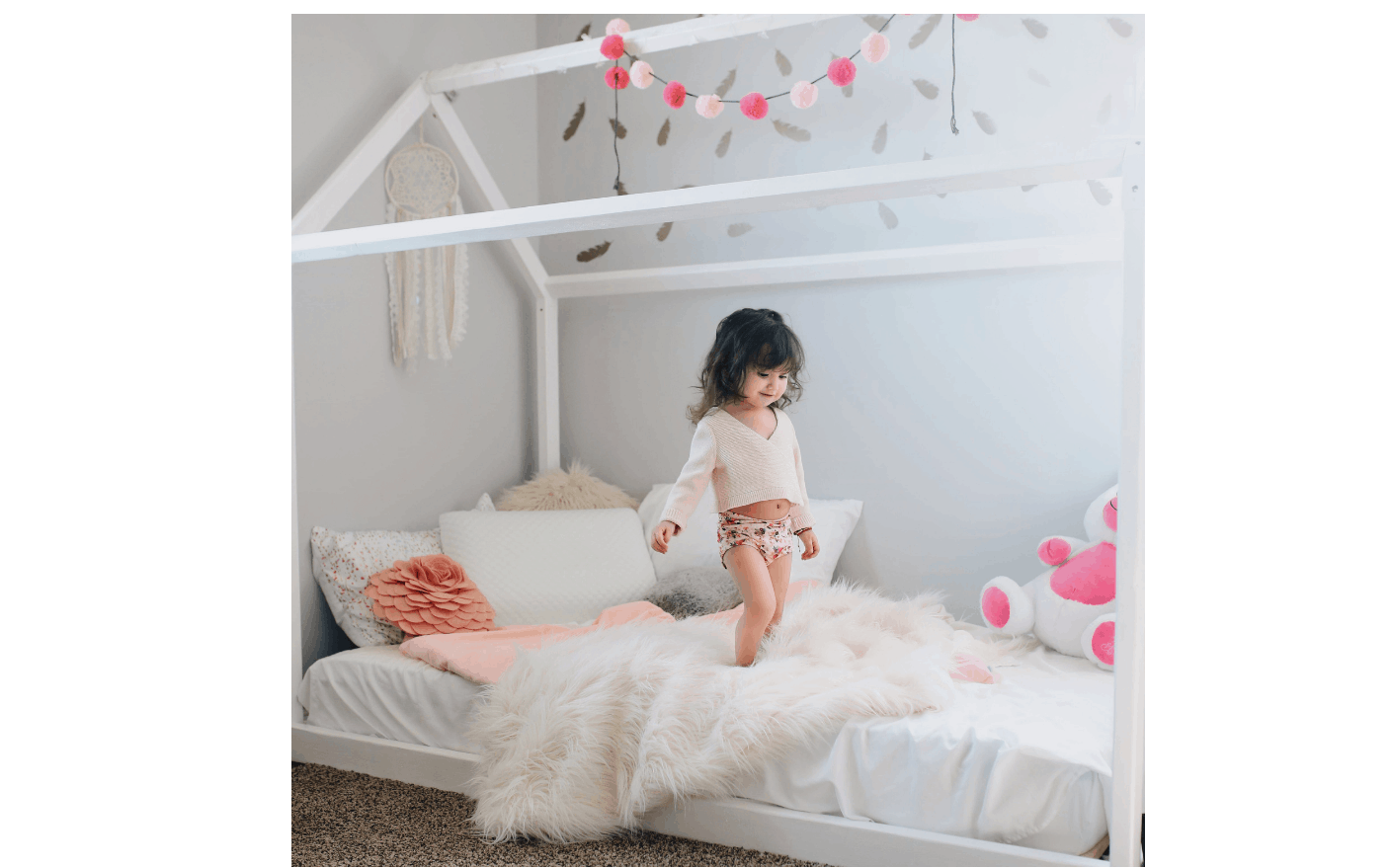
Montessori floor bed
Montessori floor beds are likely the first thing you think about when you hear “Montessori Bedroom”… And rightly so! From floor beds like this one with zero confinement to those floor beds with baby gates built-in, there are tons of beautiful options for your child. I’ll link a few more Etsy favorites below, but first, let’s cover why you should consider a low-standing or floor bed.
One thing to mention: In true Montessori-style beds, there are no gates. However, this may not work best for you! Perhaps you’re transitioning from a higher-up bed or from a crib, or your child has unique needs. Whatever your situation, choose what you are most comfortable with. You may feel more comfortable with a lower rail on a bed – It’s all about you and your family’s needs!
If you are in love with the idea of a floor bed, but not totally comfortable with just a mattress, try adding a cute stuffed or braided bumper like the one linked below.
Okay, so why put your child’s mattress on the ground? Well, a floor bed is accessible for your child! They can climb in and out without assistance. This takes away parent management of their sleeping spaces and creates an area for independence and unrestricted mobility.
Unlike cribs, the kiddos are free to enjoy and explore their space when they want to and to engage with what they would like to, without having to ask for help to get there.
Here are some amazing beds from Etsy sellers:
- Toddler House from Busywood: The little house design is just so precious!
- Montessori Bed Plan from Happy Little Bear: Are you DIY savvy? Why not build your own, then! Here’s a plan to get you started
- Bed Bumpers from Vig Kids: More ideal than a gated enclosure, these bumpers are perfect for making sure your toddlers are safe in their floor bed – And they can still access it themselves
*Be sure to check the age requirements and safety information before purchasing a bed to make sure it works for you. Also, if you have a baby under 6m, make sure there is nothing on their bed like blankets or stuffed animals.
Sleep/quiet time
Having a solid bedtime routine will help ease the transition for parents and babies or toddlers alike. Try to reinforce the same habits so that your little ones know when it is time to sleep.
Your baby or toddler may also benefit from a sound machine to help with falling asleep. There are lots available online!
For napping, it is also helpful to have blackout curtains if you can. This gives the illusion of night, signaling to the little that it’s time to sleep.
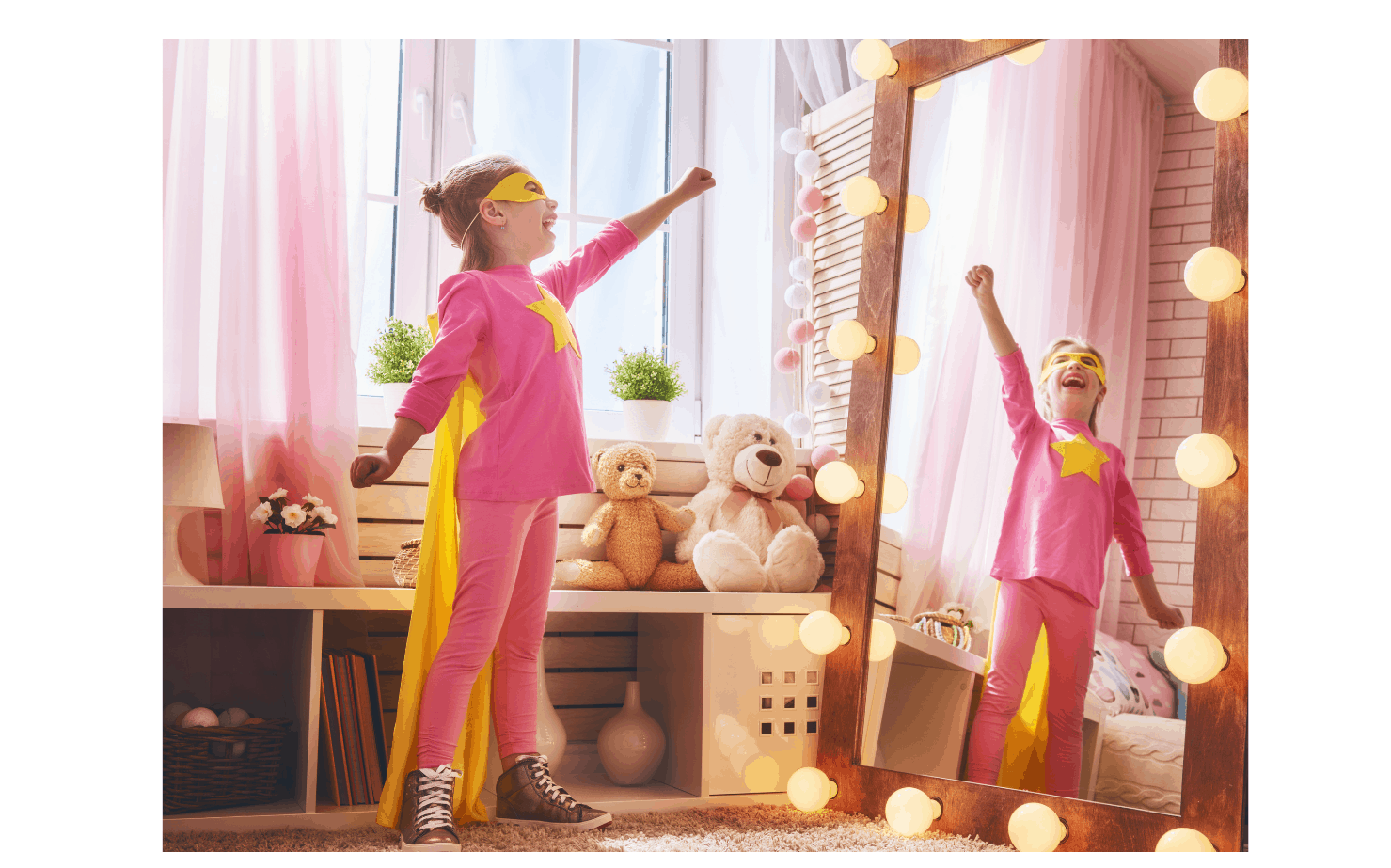
Dressing/self care area
So, in my opinion, having this kind of area in a Montessori bedroom is important whether you have a newborn or a full-fledged threenager! But, why, you’re probably thinking? (Especially if they can’t dress themselves yet?)
Creating a small area with a full-length mirror and access to their own clothes enables so much personal growth. Seeing their bodies every day increases self-confidence and body awareness and helps them watch what they’re doing as they learn to dress themselves. It also engages their visual senses, too.
When putting together their dressing area, consider a dresser that does not have heavy drawers for easy access. You could also use kid-friendly cubbies or baskets for clothes storage in their self-care area, making it easy for them to pick their own outfit.
For newborns, try to change their diapers in this space as much as possible, too. This gets them used to seeing their bodies in the mirror and increases self-awareness from the start! It also distracts extra-squirmy babies, making diaper changes easier.
Another good idea is having an easily accessible hamper so they can learn where to put their dirty clothes.
Independent dressing
Here’s a nanny pro-tip for teaching your children to dress themselves… So many times while getting children dressed they immediately ask for help. “I don’t know how!” they will exclaim in frustration. Or flat out “I can’t!“
Firstly I try to address and acknowledge their statement. I’ll usually say something along the lines of “You can’t – yet.” This validates their feelings but encourages them that they can.
Then, I’ll ask them to try first before asking for help. Let them do as much as they can while helping (not doing it for them!) them get dressed step by step.
It will amaze you what they can do and how quickly they can learn! Having a mirror helps them get used to dressing themselves and allows them to admire their funky outfits as they begin practicing self-expression through picking their own clothes.
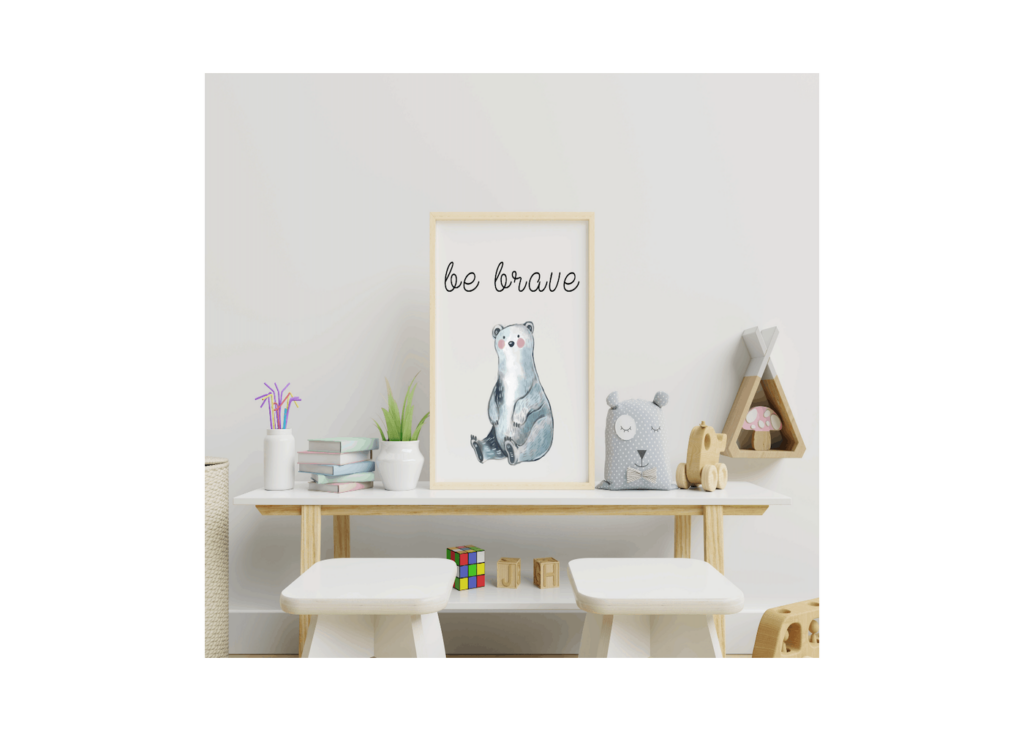
Art/décor
What do I mean by Montessori bedroom art/décor? Simply just that anything you use to create ambiance in your child’s space is placed in such a way that they can truly appreciate and engage with it.
How frustrated would you be if every time you wanted to admire your favorite painting, you had to go grab a ladder and climb up to see it? Placing wall décor at the child’s eye level discourages that same frustration! They don’t have to climb the furniture or ask for Mommy/Daddy to lift them up so they can see their own decorations when they’re thoughtfully placed in the first place.
For some ideas of child-friendly art that make for beautiful accents, check out some of my absolute favorites on Etsy like this “Positive Affirmations Print” by Skye and Friends. Printberry Kids also has an adorable set for a Calming Corner that has me swooning!
Adding intentional art like educational posters is awesome. Another idea? Turn your own child’s work into bedroom art! Simple displays can be made with twine and wooden clothespins, or even cheap frames!
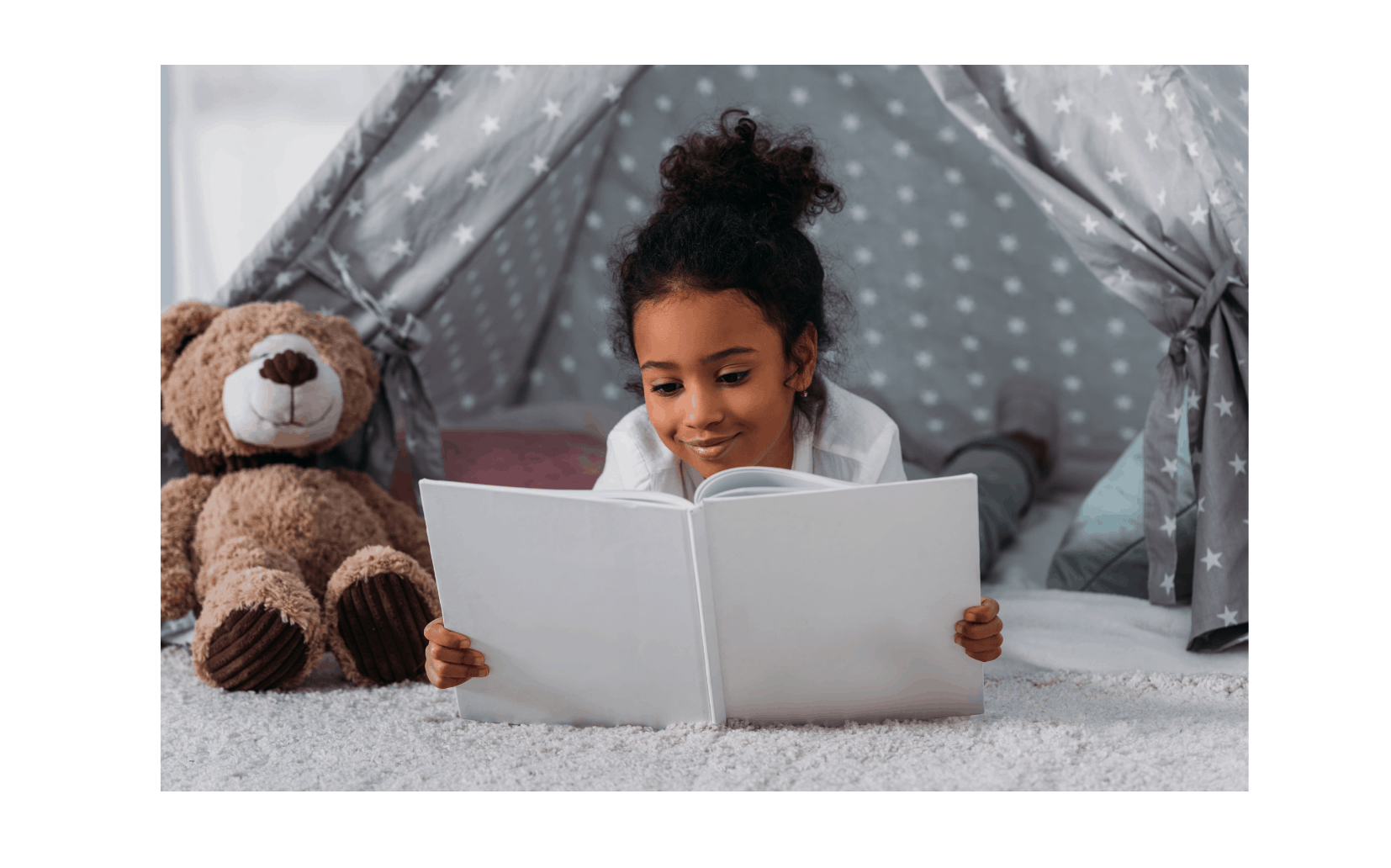
Extra space?
So, you’ve set up the dreamiest sleeping and dressing areas in your child’s new Montessori bedroom… But what about the rest? In my opinion, the best use of extra space is a reading nook.
Some bookshelves appropriate for a child’s height and a comfy place to sit are all you really need to set this up – anything else you add is just a bonus! You could also use a beanbag chair and/or a soft rug.
Already have a reading area? Great! Consider these options:
- Perhaps they love dressing up. So hang some hooks with their favorite costumes!
- Do you have budding musicians? Maybe they would love a little music corner!
- Don’t have room in your home for a Montessori playroom? Perhaps you could put some shelving in their room for their own little bedroom-playroom
Conclusion
Exactly how you design your Montessori bedroom is totally up to you, but in true Montessori fashion, do be sure to only include pieces that are necessary, functional, and child-friendly. Doing so will maximize their learning and development and let them feel entirely in control of their own space.
Styling their room with the Montessori approach in mind encourages independent exploration and freedom of movement, helping your children to increase their independence.
By replacing big and heavy furniture and organizing your kiddo’s things where they are at the child’s level, your child will experience those benefits. So, whether you are designing a nursery for your infant or the perfect bedroom for your toddler, we hope that this post has helped you integrate the Montessori philosophy into your planning!

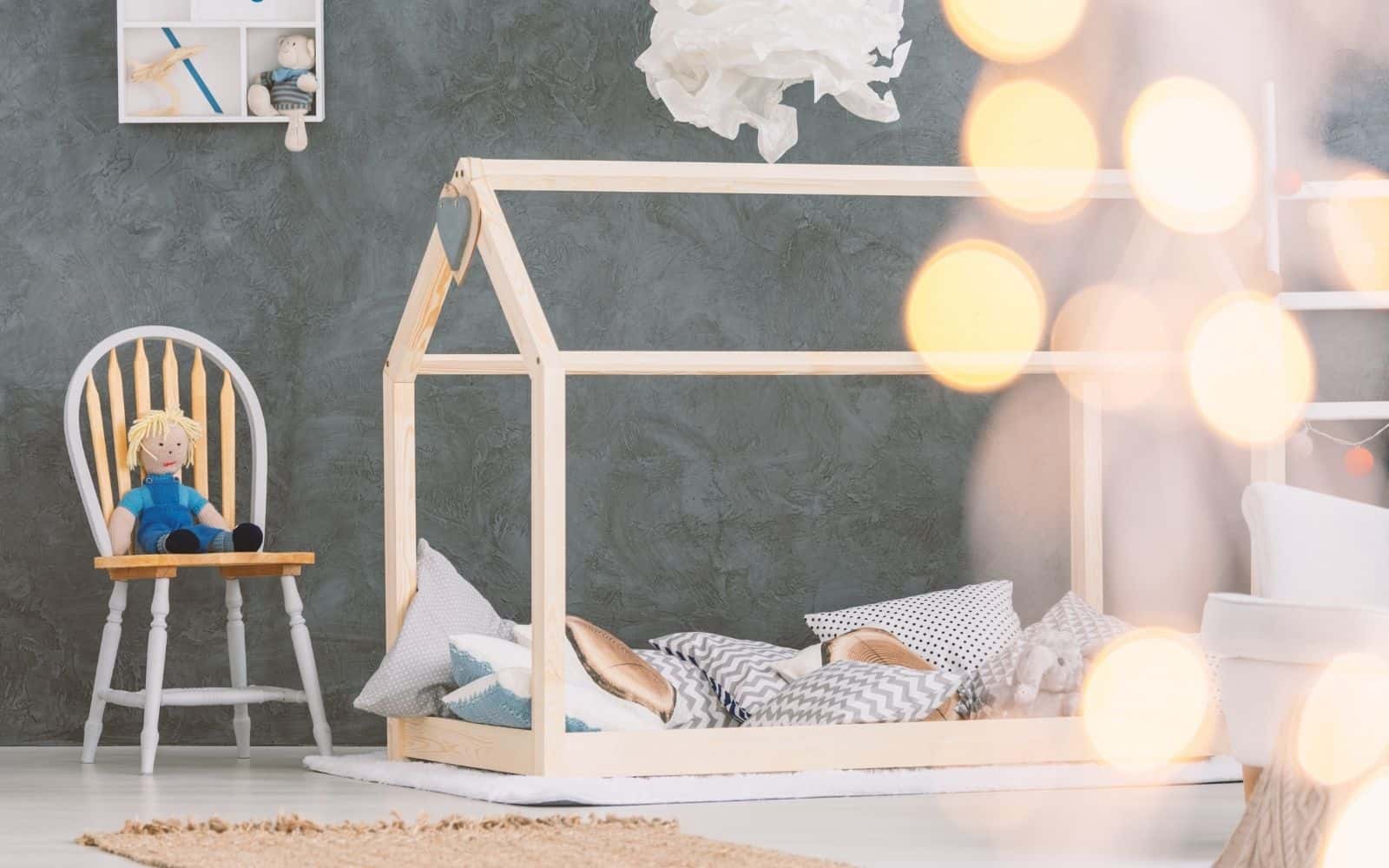
Leave a Reply